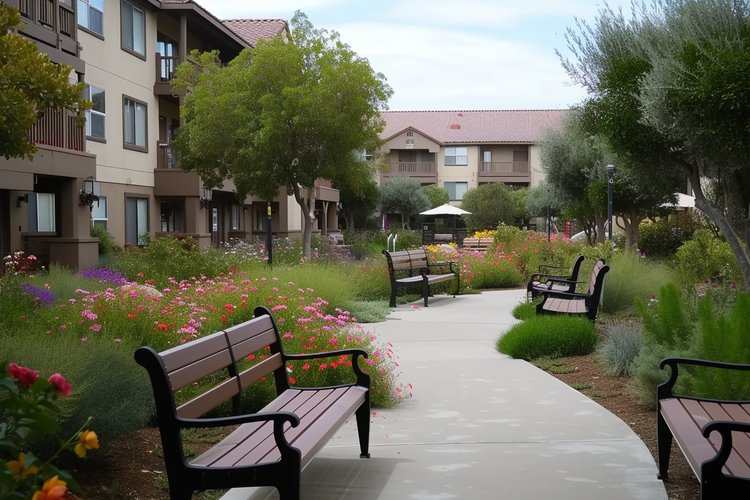Intergenerational Co-living: Reshaping Urban Housing
In a world grappling with housing shortages and social isolation, an innovative solution is gaining traction. Intergenerational co-living, where young professionals and seniors share living spaces, is redefining urban housing dynamics. This model promises to address multiple societal challenges while fostering unique bonds across age groups. Read below to explore how this trend is transforming cities and communities.

The roots of the current movement can be traced back to the early 2000s in Europe, particularly in countries like the Netherlands and Denmark. These nations pioneered programs that paired university students with elderly residents, offering affordable housing in exchange for companionship and light assistance. The success of these initiatives sparked interest globally, leading to the development of more formalized intergenerational living arrangements.
The Mechanics of Modern Intergenerational Housing
Today’s intergenerational co-living spaces come in various forms, from purpose-built complexes to retrofitted existing buildings. The core concept involves creating living environments where different generations can coexist harmoniously while maintaining their independence. These spaces typically feature private living quarters for each resident, complemented by shared common areas that encourage interaction.
Many models incorporate a element of mutual support. Younger residents might assist with technology or physical tasks, while older residents offer life experience and mentorship. Some arrangements involve reduced rent for younger participants in exchange for a set number of hours spent engaging with older residents. This creates a symbiotic relationship that benefits all parties involved.
Societal Benefits and Challenges
The intergenerational co-living model offers numerous benefits to both individuals and society at large. For seniors, it provides companionship and helps combat loneliness, which research has linked to various health issues. Young adults gain affordable housing options in desirable urban areas, along with the opportunity to learn from their older neighbors’ life experiences.
From a broader societal perspective, these arrangements can help alleviate pressure on healthcare and social services by creating informal support networks. They also promote age diversity in neighborhoods, potentially reducing age-related stereotypes and fostering greater intergenerational understanding.
However, the model is not without challenges. Privacy concerns, potential conflicts arising from generational differences, and the need for clear boundaries are all issues that must be carefully managed. Additionally, there’s the risk of exploitation if proper safeguards aren’t in place to protect vulnerable residents.
Case Studies: Success Stories from Around the Globe
Numerous successful intergenerational co-living projects have emerged worldwide, each with its unique approach. In Helsinki, Finland, the Kotisatama Housing Community has created a vibrant mixed-age community where residents range from young families to retirees. The complex features shared spaces like a library, gym, and rooftop garden, fostering a sense of community among diverse age groups.
In the United States, the Judson Manor in Cleveland, Ohio, has garnered attention for its program that offers free housing to graduate students in exchange for engaging with senior residents. This arrangement has led to unexpected friendships and collaborations, including music performances and art projects.
The Future of Urban Living
As cities continue to grapple with housing affordability and changing demographics, intergenerational co-living is poised to play an increasingly significant role in urban planning and development. Urban planners and policymakers are starting to recognize its potential to address multiple societal challenges simultaneously.
Looking ahead, we can expect to see more purpose-built intergenerational communities, as well as policies that incentivize developers to incorporate these models into their projects. Technology will likely play a growing role, with digital platforms facilitating matches between potential co-living partners and smart home features enhancing safety and communication within these communities.
Implications for Social Fabric and Cultural Norms
The rise of intergenerational co-living has the potential to reshape our understanding of community and family structures. By bringing different generations together in shared living spaces, it challenges the age-segregated model that has dominated urban development in recent decades.
This shift could have far-reaching implications for social cohesion and cultural transmission. Younger generations may gain a deeper appreciation for history and tradition, while older adults stay connected to evolving social trends and technologies. The exchange of skills and knowledge across age groups could lead to more dynamic, resilient communities better equipped to face societal challenges.
A New Paradigm for Urban Housing
Intergenerational co-living represents a promising solution to some of the most pressing issues facing modern urban societies. By reimagining how different age groups can live together and support one another, it offers a path to more affordable, socially connected, and sustainable communities.
As this model continues to evolve and gain traction, it has the potential to fundamentally alter our approach to urban housing and community building. While challenges remain, the benefits of intergenerational living – from combating loneliness to promoting affordable housing – make it a trend worth watching and supporting as we shape the cities of the future.





